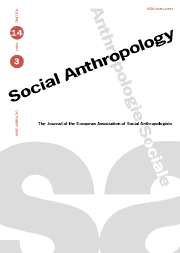Towards an ethnography of African great apes
Published online by Cambridge University Press: 27 October 2004
Abstract
How can biological and social anthropologists today relate to each other's work? Using my research in biological anthropology as an example, I show that the African great apes sometimes engage in meaning-making as they act together. That is, gorillas, chimpanzees and bonobos communicate, especially through gesture, in contingent and creative ways, going beyond a mere exchange of signals to achieve co-construction of meaning. I argue that when biological anthropologists join social anthropologists in studying meaning-making, the two disciplines are inherently in relation.
- Type
- Research Article
- Information
- Copyright
- Cambridge University Press 2004
Footnotes
- 5
- Cited by




